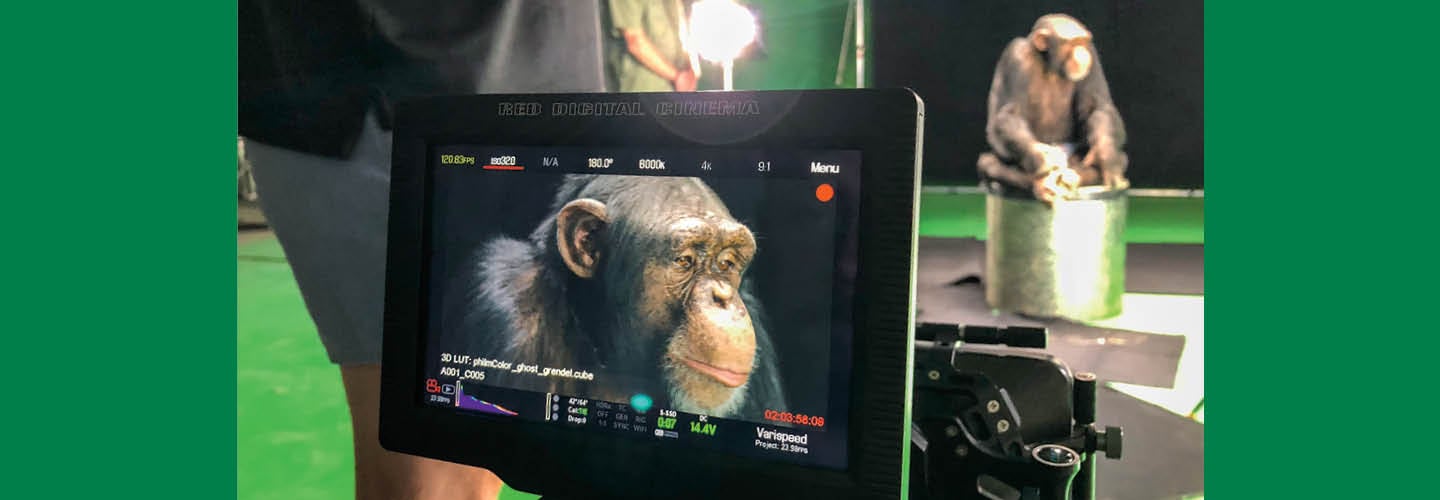One rainy morning at Chicago’s Lincoln Park Zoo, children were raising a ruckus at the chimpanzee exhibit. The apes themselves were placid, ignoring their audience as they foraged for leaves and swayed in hammocks.
But out of public view was another group of chimps who were far less sanguine about strangers. And when they spotted two unfamiliar visitors, they rushed over to the edge of their enclosure. Eli, a gentle young male, approached with his hair standing on end. Then Susie, a small but strong-willed female, spotted a photographer and began to shriek.
“She might be upset at the cameras,” says Jill Moyse, the curator of primates.
Eli and Susie had spent much of their young lives in front of the lens. Before arriving at the zoo in 2020, the pair had worked in Hollywood, racking up a long list of credits, including a One Direction music video, the TBS show Angie Tribeca, and some commercials.
One rainy morning at Chicago’s Lincoln Park Zoo, children were hooting and yelling at the chimpanzee exhibit. The apes themselves were calm. They ignored their audience as they foraged for leaves and swayed in hammocks.
But out of public view was another group of chimps who were far less accepting of strangers. They rushed over to the edge of their enclosure when they spotted two unfamiliar visitors. Eli, a gentle young male, approached with his hair standing on end. Then Susie, a small but strong-willed female, spotted a photographer and began to shriek.
“She might be upset at the cameras,” said Jill Moyse, the curator of primates.
Eli and Susie had spent much of their young lives in front of the lens. Before arriving at the zoo in 2020, the pair had worked in Hollywood. They had a long list of credits, including a One Direction music video, the TBS show Angie Tribeca, and some commercials.

